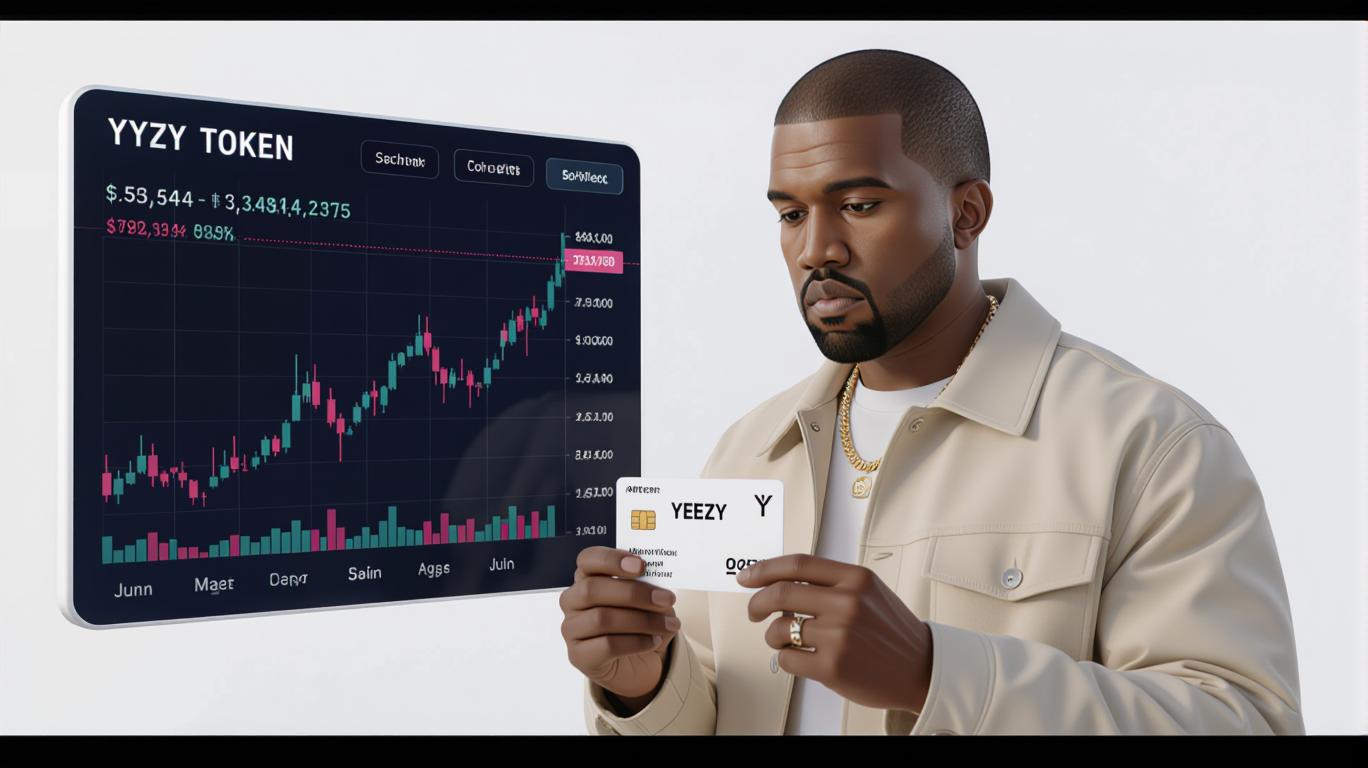
In the ever-shifting landscape of cryptocurrency, few phenomena capture the public imagination—and wallets—like memecoins. These tokens, often born from internet culture or celebrity endorsements, thrive on virality and speculation. YZY Money, the Solana-based memecoin launched in August 2025 by Ye (formerly Kanye West), has become the latest lightning rod for debate. Its explosive debut, followed by a dramatic collapse, offers a case study in the risks and rewards of celebrity-backed crypto assets—and raises a critical question: Can such tokens evolve beyond hype into sustainable investments?
The YZY Launch: A Storm of Hype and Volatility
YZY’s launch was nothing short of theatrical. Announced via social media by Ye himself, the token promised to build a “new economy built on chain” through a financial ecosystem including a crypto payment processor (Ye Pay) and a YZY-branded credit card. Within 40 minutes of its debut, YZY’s market capitalization briefly surpassed $3 billion, peaking at $3.16. By day’s end, however, the token had plummeted to below $1, erasing over 60% of its value. This volatility mirrored the trajectories of other memecoins like EthereumMax (EMAX) and Donald Trump’s TRUMP token, which also saw rapid price swings before stabilizing—or collapsing entirely.
The token’s meteoric rise was fueled by a mix of celebrity allure and speculative frenzy. Traders on platforms like Hyperliquid leveraged derivatives to bet heavily on YZY, with one trader reportedly netting $202,000 by shorting the token during its freefall. Yet, for every winner, there were countless losers. Late buyers, lured by the promise of quick riches, faced steep losses as the token’s value evaporated.
Tokenomics: Centralization and Red Flags
YZY’s structure, however, tells a different story. The tokenomics are heavily centralized, with 70% of the supply allocated to Yeezy Investments LLC—Ye’s team—under a vesting schedule. The remaining 30% is split between public buyers (20%) and liquidity (10%). On-chain data revealed that 94% of the supply was controlled by insiders at launch, with a single multisig wallet holding 87% of the tokens. This concentration of power raises significant red flags, as it allows Ye and his team to manipulate pricing by unilaterally adjusting liquidity.
Critics have likened this structure to the LIBRA rug pull scandal, where project insiders drained liquidity pools to siphon funds. Unlike traditional cryptocurrencies, which rely on decentralized governance, YZY’s design gives its creators unchecked control. This centralization undermines the token’s purported “decentralized” ethos and exposes investors to the risk of a classic pump-and-dump scheme.
Celebrity Hype vs. Regulatory Scrutiny
YZY’s launch also highlights a recurring pattern in celebrity-backed crypto projects. From Akon’s Akon City to Ye’s own past criticism of memecoins as “scams,” these ventures often blend personal branding with financial engineering. Yet, they frequently face regulatory backlash. The SEC has already targeted similar projects for alleged securities law violations, and YZY’s insider allocations and lack of utility (beyond speculative trading) could attract similar scrutiny.
Moreover, Ye’s pivot to crypto comes amid a backdrop of personal and professional turmoil. The project appears to be an attempt to re-engage his fanbase and create a new revenue stream, but its lack of transparency and reliance on hype have led many to question its legitimacy. While the YZY website outlines a roadmap for a full ecosystem—including the YZY Card and Ye Pay—these plans remain unfulfilled and unverified.
Can Memecoins Evolve Beyond Hype?
The ultimate test for YZY and similar tokens lies in their ability to transition from speculative assets to functional ecosystems. For this to happen, they must address three key challenges:
1. Utility: Memecoins often lack real-world use cases. YZY’s proposed payment tools and card could bridge this gap, but their development is unproven.
2. Decentralization: Centralized tokenomics erode trust. A more equitable distribution model would be necessary to align incentives between creators and investors.
3. Regulatory Compliance: Projects must navigate legal frameworks to avoid the fate of predecessors like FTX or BitMEX.
Historically, memecoins that survive the hype cycle—such as Dogecoin—do so by cultivating community-driven utility and governance. YZY, by contrast, appears to prioritize celebrity influence over decentralization, making its long-term viability uncertain.
Investment Advice: Proceed with Caution
For investors, YZY underscores the high-stakes nature of speculative crypto assets. While the token’s volatility created opportunities for short-term gains, its structural flaws and regulatory risks make it a poor candidate for long-term portfolios. Key takeaways include:
– Diversify: Avoid overexposure to tokens with centralized tokenomics or celebrity endorsements.
– Due Diligence: Scrutinize on-chain data and project roadmaps for signs of manipulation or unrealistic promises.
– Risk Management: Use stop-loss orders and limit leverage when trading volatile assets like YZY.
In the end, YZY is a cautionary tale as much as it is a case study. It reveals the allure of celebrity-driven crypto projects—and the dangers they pose. For now, these tokens remain speculative bets, not sustainable investments. Unless YZY and its ilk can demonstrate genuine utility, transparency, and decentralization, they will likely remain footnotes in the volatile history of memecoins.
As the crypto market matures, investors must ask: Is the next YZY a fleeting fad—or a foundation for the future? The answer, it seems, lies not in the hype, but in the code.